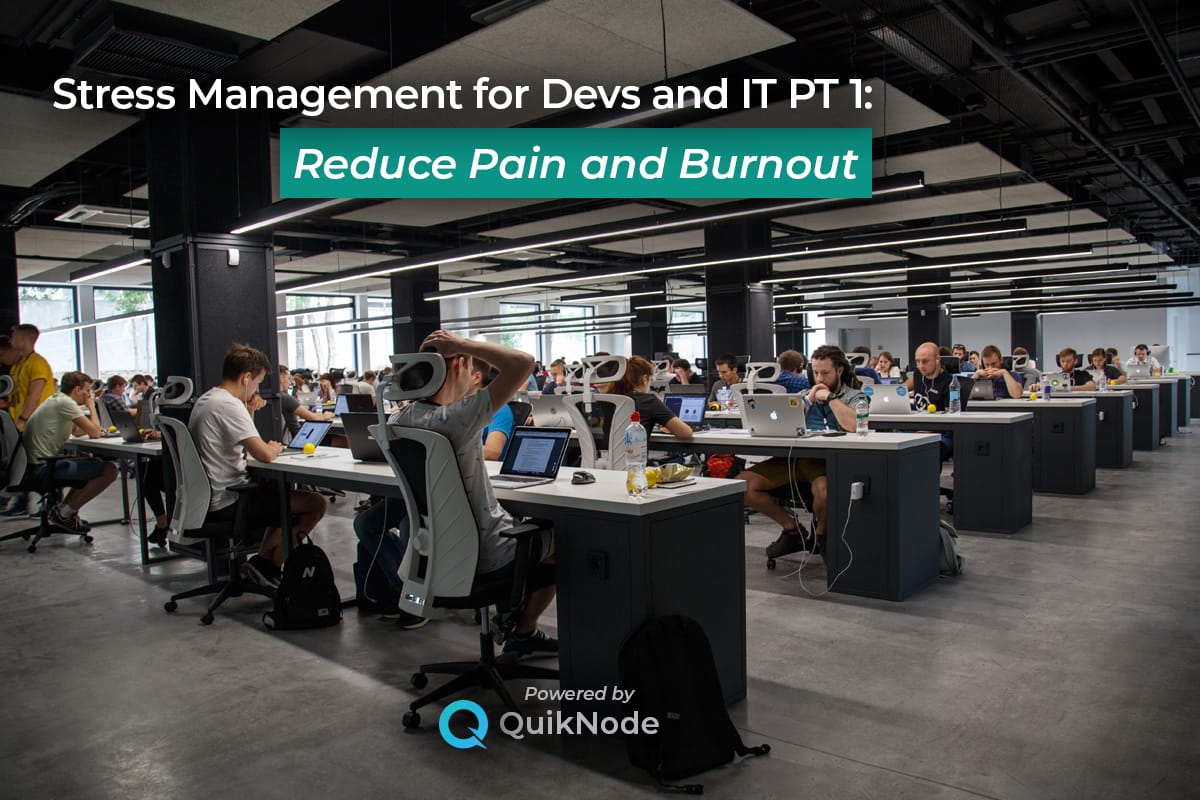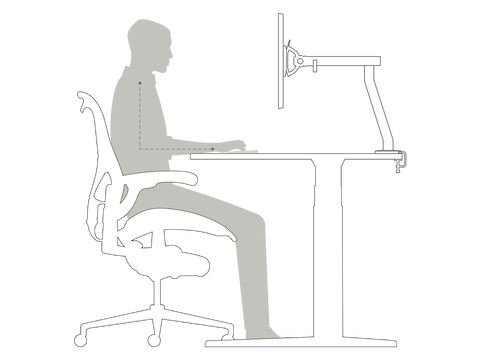Stress Management for Devs Pt 1: Reducing Pain and Burnout
In part one of this series, we will focus on the day-to-day physical aspect of developer-specific stress and some ways to address it.

Developers and people in the tech space face a special set of stressors where effects can range from insidious to feelings of shock and awe. Because we’re veterans of this very battle, we have some strategies and methods that might help you reduce stress, be more productive and live your best life doing what you love.
In our world, we aren’t usually lifting pianos or pounding stuff with hammers, but the physical toll of remaining in one position for extended periods of time and staring at a screen can be astoundingly intense. Your body is designed to move, so a sedentary existence creates many problems. First off, you’re not burning calories and muscles are not being challenged, so they atrophy. Most of us do not have perfect ergonomic posture so we are slowly damaging joints as they sustain stress resting in suboptimal positions. This can lead to cumulative trauma disorders or repetitive stress injuries, which can create lifelong impacts on health. Symptoms may include pain, muscle fatigue, loss of sensation, tingling, and reduced performance.
The solution here is twofold: posture and movement.
Let’s talk about computer posture first. Here are the basics:
- Look forward in a comfortable way; not looking up or down, but straight ahead. This can reduce tension in the neck, shoulders, base of the skull and eyes. This might require you to reposition your monitor/laptop.
- Position shoulders back and down: subtly pull shoulder blades toward the spine, then down. This is a simple way to release our upper shoulders.
- Slightly engage your abs and tuck the bottom of your tailbone a little forward. The idea is that you are reducing the lower back curve a touch, but not too much. The beneficial result is less tension in the lower back.
- Keep the forearms parallel to the floor and elbow at 90 degrees.
- Sit in a chair that supports your back in a relaxed, upright position with a slight arch. You may need a lumbar roll (or a rolled towel) for the lower back.
- Place your legs parallel to the floor - use a foot rest if your feet don’t reach the ground.

Equally important to posture is movement and there are many ways to do this, but let's talk about it in context of a work day/session. Even if you work out every day, it is still important to move during extended periods of computer work and it doesn’t have to take much time or be too involved.
TAKE BREAKS
Once an hour or so, stand up and just walk. Get a drink or snack or just do a lap around your home or office. Do a basic stretch or two like touching your toes: hinging at the hips without hunching your back and with knees bent slightly. The idea here is to work on reducing the bend in your knees over time with comfort. Make fists and then extend your hands/fingers slowly. Move your wrists in circles in both directions, exploring the edge of your comfort zone. Take 3-6 slow intentional breaths through the nose.
You might feel a sense of release and physical and mental reset. You also might notice that you are less anxious and can easily reprioritize tasks ahead. Often when we plow through our day without breaks we become hypnotized with our work and it seems like we are “in the zone.” But like any activity that is sustained without breaks, we become fatigued and burn out. This burn out doesn’t usually manifest as a sudden drop out of the activity. What happens is because our cognition is being affected, our micro and macro decision-making become fragmented and we are less effective. So the 5 minutes per hour can pay you back with better work in less time.
Posture and movement breaks work together to keep you healthier, reduce pain and prevent future health problems related to cumulative trauma disorders or repetitive stress injuries. The big thing that is often missing from this conversation is that these practices can create a sense of wellbeing. Your body sends messages to you and the more disconnected you are from your body, the more difficult it can be to interpret these messages. When we tune in with movement and align ourselves posturally, we are not only taking care of our body but opening ourselves up to a clearer connection. Thus enabling us to take better care of ourselves and get more out of life: work, relationships and fun.
Find a helpful chrome extension for break reminders HERE
Need help with your project or have questions? Contact us via this form, on Twitter @QuickNode, or ping us on Discord!
About QuickNode
QuickNode is building infrastructure to support the future of Web3. Since 2017, we’ve worked with hundreds of developers and companies, helping scale dApps and providing high-performance access to 16+ blockchains. Subscribe to our newsletter for more content like this and stay in the loop with what’s happening in Web3! 😃





